
Famous Signet Rings in History: Symbols of Legacy and Power
Tracing the Legacy of Signet Rings Through History
Signet rings have served as enduring symbols of authority and identity across the ages. Originating in ancient civilizations, these rings were more than ornamental—they were essential tools used by rulers to seal correspondence and decrees, embedding their personal mark on history.
Throughout the centuries, signet rings have adorned the hands of powerful figures, from pharaohs and kings to influential leaders and modern celebrities, each adding a unique chapter to the rich narrative of these iconic pieces. This legacy continues today, as signet rings remain a fashionable and symbolic choice for people from all walks of life, blending ancient tradition with contemporary style.
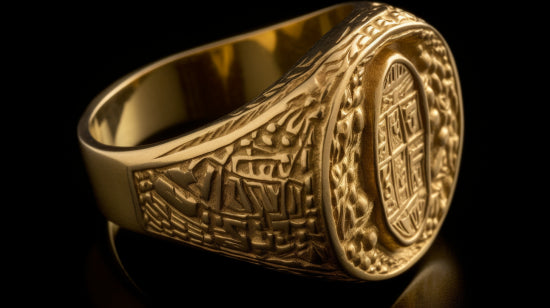
Ancient Origins of Signet Rings
The tradition of wearing signet rings dates back thousands of years, with roots in ancient civilizations such as Egypt and Mesopotamia. These rings served as personal seals for the elite, imbued with legal and ceremonial significance.
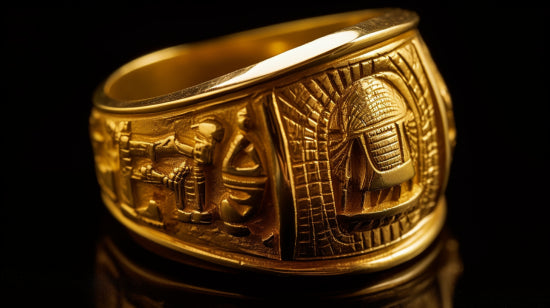
In ancient Egypt, signet rings were often crafted from precious materials and intricately carved with hieroglyphs and symbolic imagery. One of the most famous examples is the signet ring of Tutankhamun. This ring was used to seal the entrance of his tomb, marking it with the royal seal to ensure it remained untouched and protected.
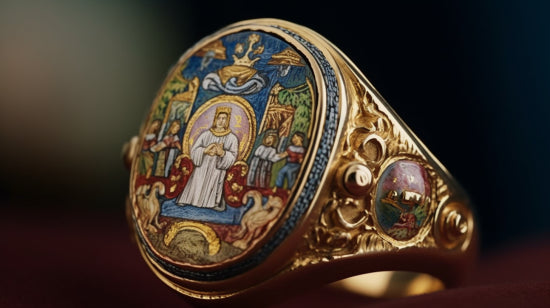
Mesopotamian leaders also utilized signet rings, typically engraved with cuneiform script, to authenticate documents. These rings were symbols of power and authority, used to demonstrate the wearer's ability to control and govern.
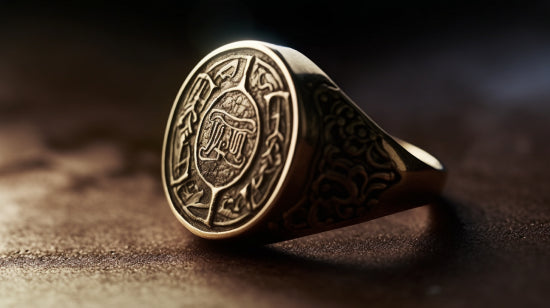
The use of signet rings in these ancient cultures not only highlights their functional role in administration and ceremony but also their status as items of significant personal and societal value
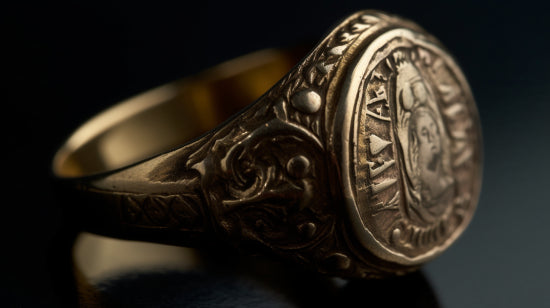
Signet Rings of European Royalty
Throughout medieval and Renaissance Europe, signet rings held profound significance as symbols of royal authority and personal sovereignty. These rings were essential for kings and noblemen, used primarily to seal letters and decrees, which authenticated documents with the press of their engraved seals.
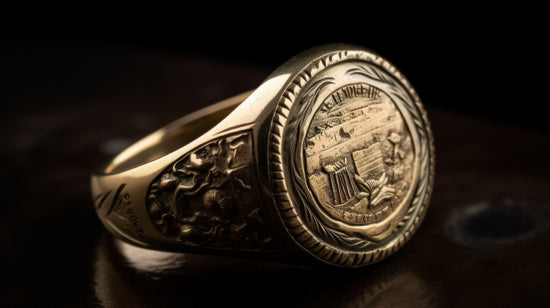
One of the most illustrious symbols associated with royal authority is not a signet ring but the famous gem known as the "Black Prince's Ruby." This large red spinel, historically mistaken for a ruby, is named after Edward of Woodstock, Prince of Wales, famously known as the Black Prince. Although not part of a signet ring, its legacy alongside royal insignia showcases the value and power of such symbols. After the Black Prince, the gem was set into the crown of England, and it now adorns the Imperial State Crown, symbolizing the continuity and legacy of the British monarchy.
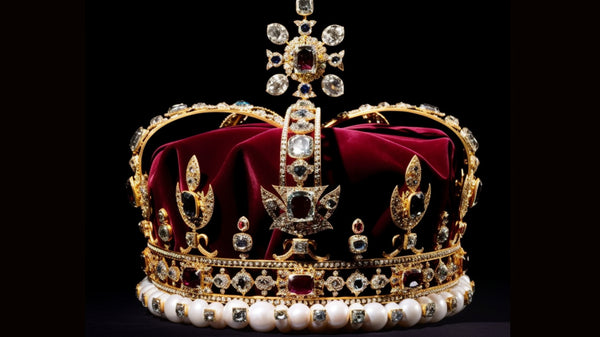
The enduring role of signet rings and precious gems in European royalty underlines their importance not only as personal adornments but also as enduring emblems of lineage and authority.

Signet Rings in Literature and Art
Signet rings have long transcended their practical applications to become iconic symbols in literature and art, reflecting their deep cultural significance. These rings often symbolize power, authority, or mystery, and have been featured prominently in works spanning from classic literature to contemporary paintings.

In literature, signet rings play pivotal roles in plots and character development. For instance, in Alexandre Dumas' "The Three Musketeers," the signet ring serves as a crucial plot device that propels the musketeers on their quest. Similarly, in Shakespeare’s "Hamlet," the signet ring is used symbolically to signify the sealing of one's fate, emphasizing themes of betrayal and identity.

In the realm of art, signet rings have been depicted in numerous portraits of historical figures, signifying their status and identity. Famous paintings, such as those of King Henry VIII, often show the monarch sporting a signet ring, indicative of his royal authority and personal style. These artistic depictions help cement the signet ring’s status as an enduring symbol of power and prestige.
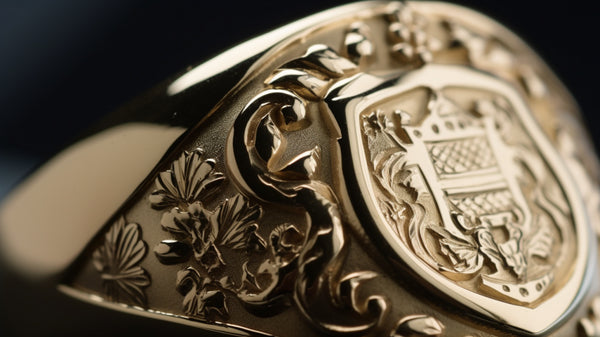
The portrayal of signet rings in both literary and visual arts not only highlights their aesthetic value but also underscores their significance as cultural artifacts, imbued with layers of meaning that have been interpreted and reinterpreted through ages.
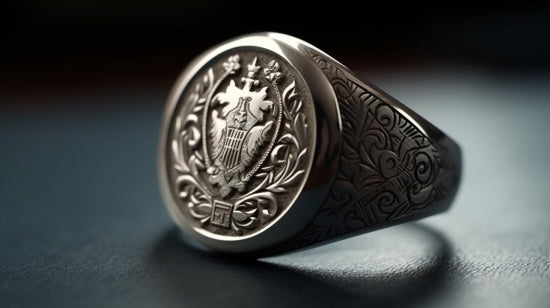
Modern Day Icons and Their Signet Rings
Signet rings have transitioned from traditional symbols of authority to fashionable accessories embraced by celebrities and public figures, reflecting their personal style and status. Today, these rings are not just about heritage; they are a distinct expression of individuality and fashion.
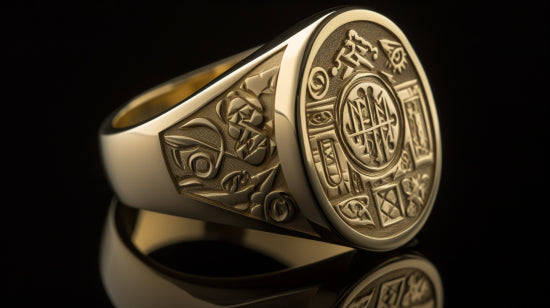
One of the most iconic figures known for his signet ring was Winston Churchill, whose gold signet ring was almost as legendary as his leadership during World War II. Similarly, Franklin D. Roosevelt, another leader known for his formidable presence, often wore a signet ring that complemented his commanding personality. These rings were part of their public personas, symbolizing strength and resolve.

Elvis Presley, the king of rock and roll, also famously wore a signet ring, further popularizing this accessory in modern culture. His TCB ('Taking Care of Business in a Flash') ring became synonymous with his image and style, representing his approach to his music and life.

The enduring appeal of signet rings among such prominent personalities underscores their versatility and timeless allure in modern fashion. Each ring tells a story, making it a deeply personal piece for those who wear it.
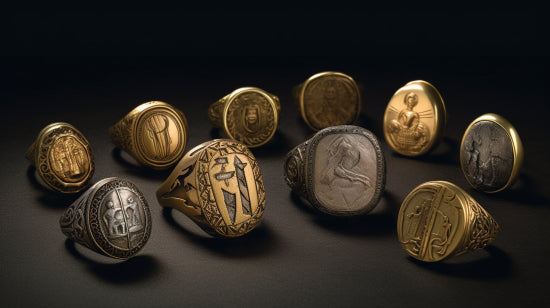
The Lasting Legacy of Signet Rings
Signet rings hold a unique place in both history and contemporary culture, bridging past and present with their enduring designs and deep-rooted symbolism. The legacy of these rings continues to influence modern jewelry, embodying a blend of tradition and innovation.
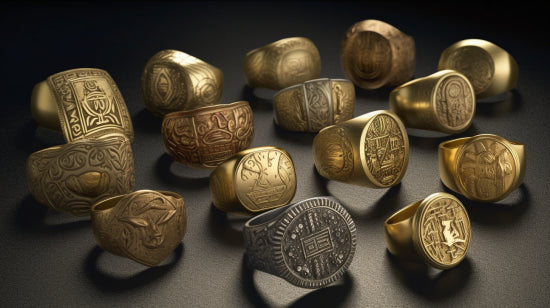
Today's designers often look to historical signet rings for inspiration, adapting classic elements to suit contemporary tastes. The use of ancient motifs, heraldic crests, and intricate engravings in modern designs connects wearers to a rich heritage of artistry and symbolism. These historical influences not only enrich the aesthetic appeal of signet rings but also add a layer of personal significance for those who wear them.
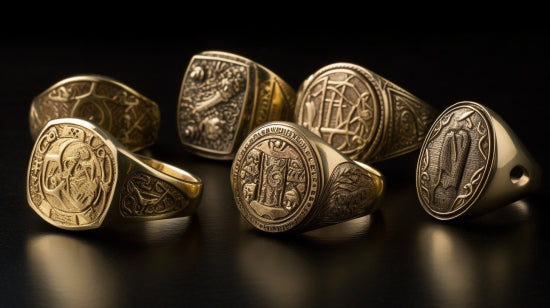
For collectors and enthusiasts, antique signet rings are highly prized. These pieces are valued not only for their beauty and craftsmanship but also for their historical associations. Collectors often seek out rings that have a verifiable provenance or those that were owned by notable figures, making each piece a tangible connection to the past.
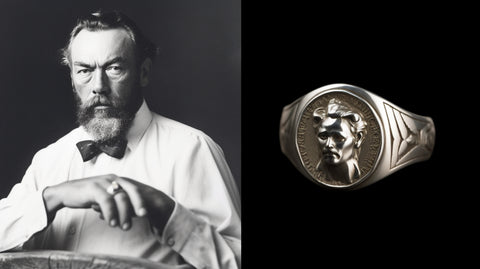
The fascination with signet rings, whether as fashion statements or collector's items, underscores their lasting appeal. They are more than just decorative objects; they are symbols of continuity, linking generations and preserving histories in their metal and stone.
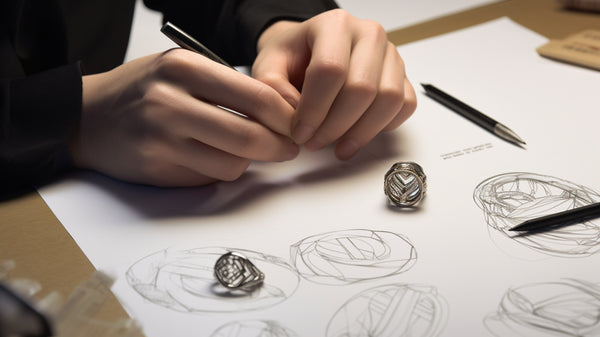
Embracing the Heritage and Style of Signet Rings
Signet rings have traversed centuries, evolving from ancient symbols of authority to cherished modern-day fashion statements. Their ability to carry deep historical significance along with their adaptability to various style trends underscores their enduring appeal. These rings serve not just as mere accessories but as a link to the past, enabling wearers to bear a piece of history on their hands.
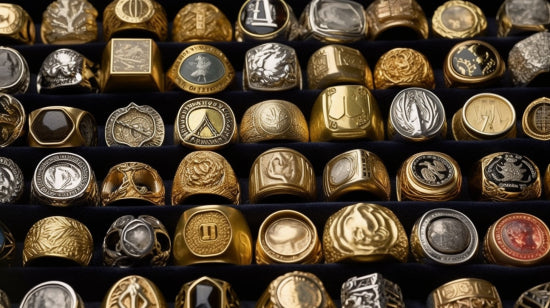
At Roberts & Co, we pride ourselves on blending tradition with contemporary fashion, crafting signet rings that are both timeless and trendy. Whether you are drawn to the classic elegance of a historical design or the boldness of modern styling, our collection offers something unique for everyone.

We invite you to explore our diverse array of signet rings and choose a piece that resonates with your personal story or fashion sense. Each ring in our collection promises not just beauty but a lasting connection to a rich heritage of artistry and symbolism.